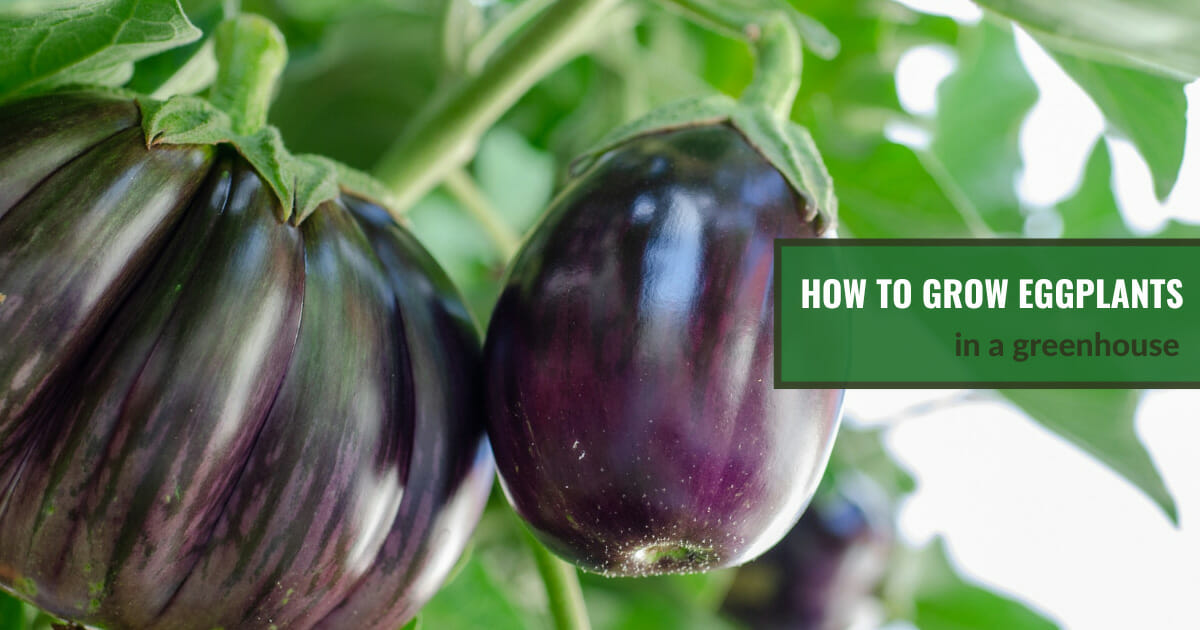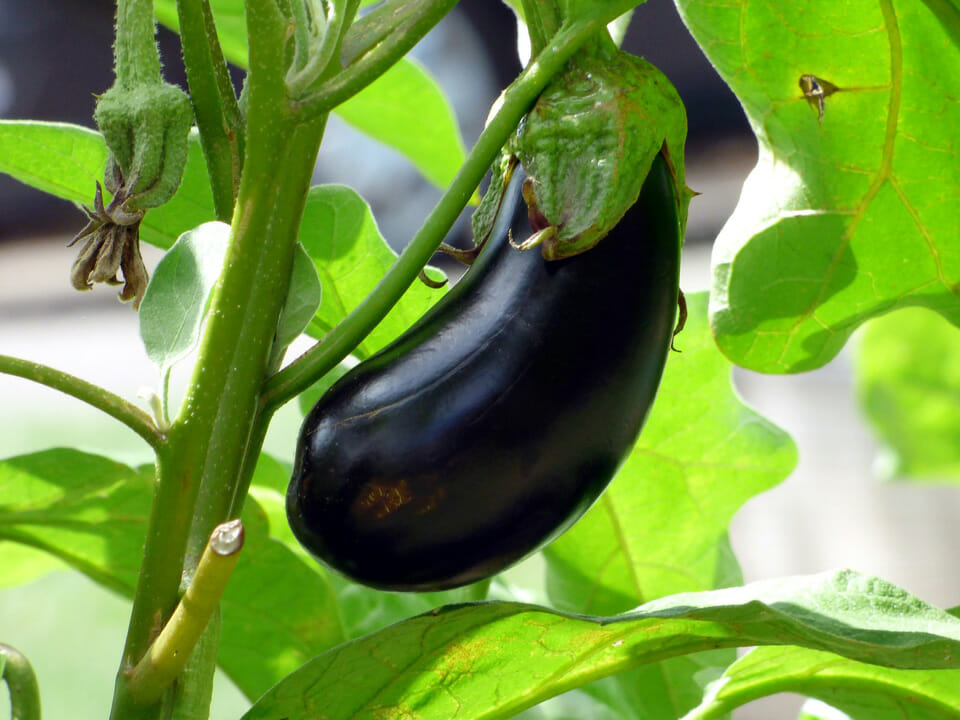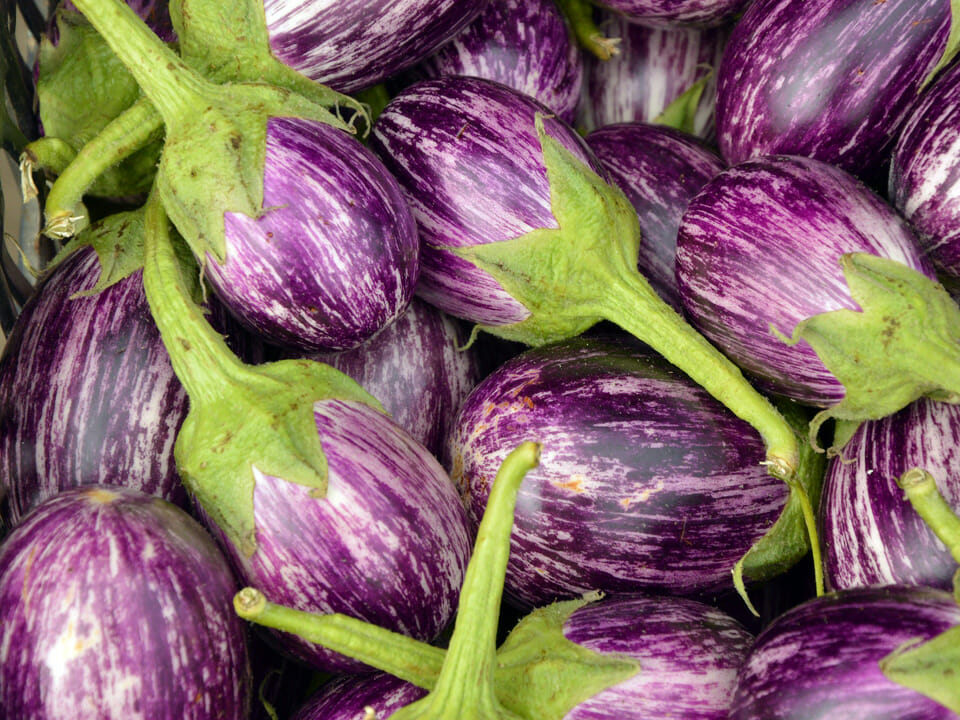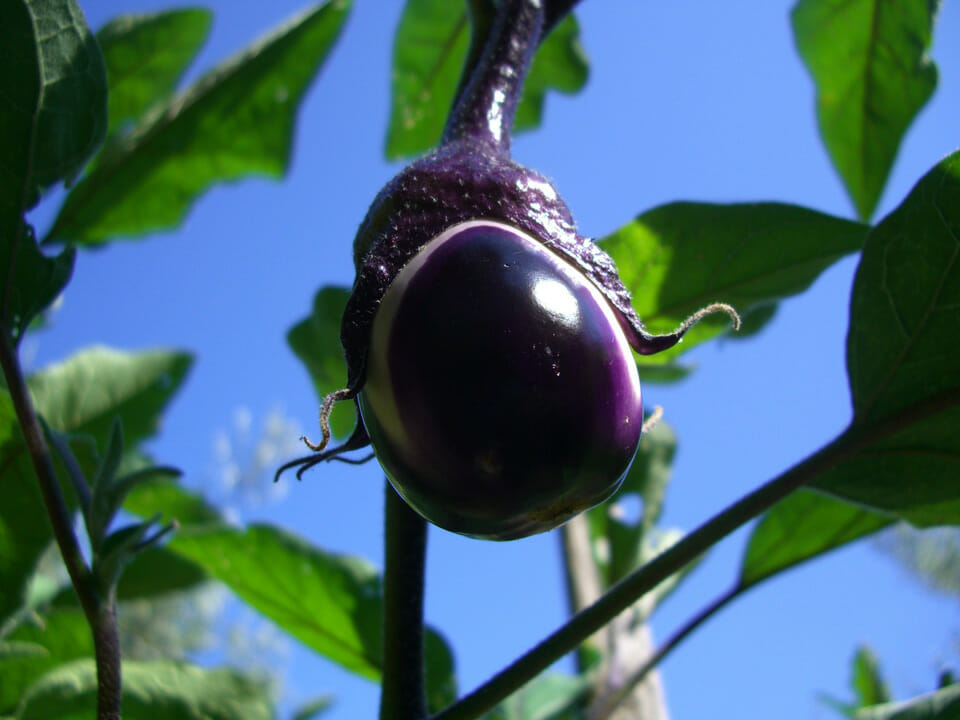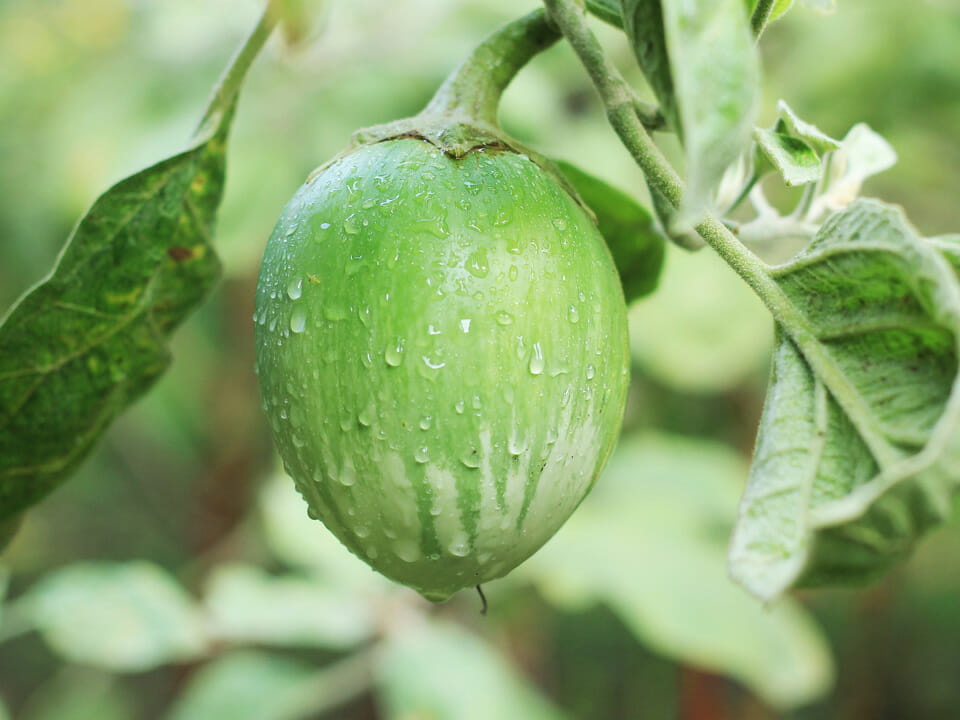






Like tomatoes, eggplants are one of the fruits most commonly associated with greenhouse growing. That’s because unless you live in a warm climate with a long growing season, it can be a huge challenge to grow eggplants outdoors. Fortunately, a greenhouse allows you to successfully grow these fruits regardless of your climate!
A greenhouse makes growing eggplants much easier by offering a protected, warm environment. With some planning, care, and patience, you can be growing these purple beauties yourself in no time!
It’s true that there’s nothing quite like harvesting an eggplant that you grew yourself. If you’re ready to take on this awesome greenhouse challenge, keep reading! In this guide, we’ll walk you through the process of growing eggplants from seed to fruit.
The benefits of growing eggplants
Eggplants have a plethora of health benefits that make them a no-brainer to include in your diet. They’re especially high in potassium, which helps regulate fluid levels inside the body’s cells. Eggplants are also rich in antioxidants, fiber, vitamin C, and calcium.
In addition to these health benefits, eggplants are prized for their versatility in the kitchen. They can be grilled, added to stew, or made into delicious eggplant parmesan.

But the biggest benefit of growing eggplants is the satisfaction you get from growing your own fruit from start to finish. Unless you live in a southern climate with a long growing season, growing eggplants outdoors can be a challenge. That’s why eggplants are a great choice for greenhouse growing.
Why grow eggplants in a greenhouse
Eggplants, like tomatoes and peppers, are in the nightshade family. And like the other fruits in this family, eggplants require a long growing season in order to develop properly, as much as 3-4 months!
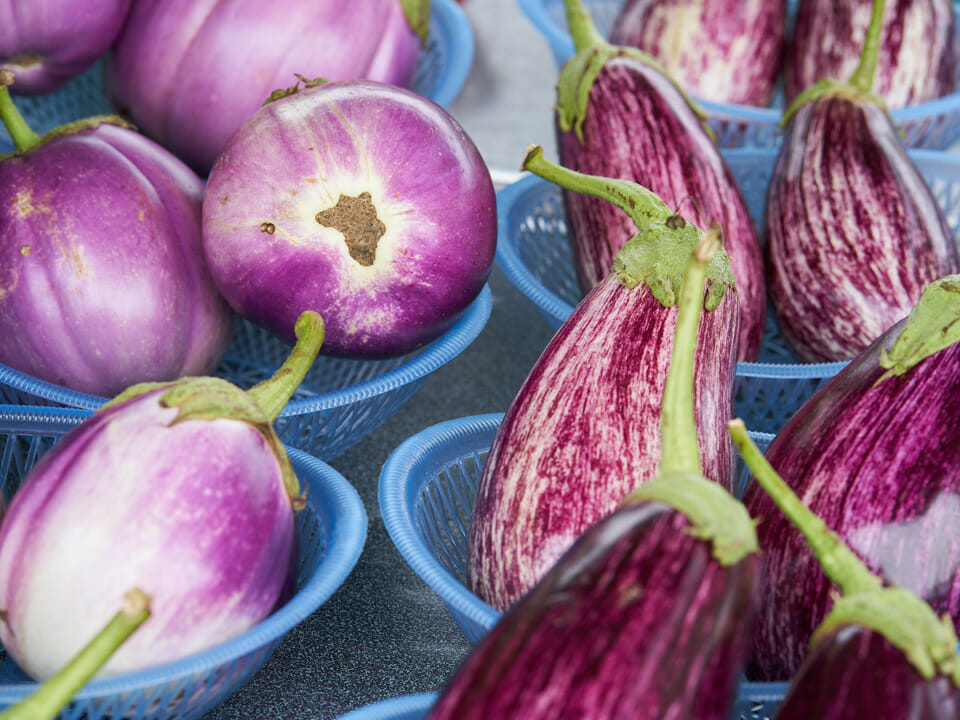
If your growing season isn’t that long, you probably won’t be able to grow eggplants outside. But that shouldn’t stop you from trying to grow these purple fruits! You can use your greenhouse to start seedlings about 2 months in advance and transplant them in the garden once all danger of frost has passed. Alternatively, you can grow your eggplants exclusively in the greenhouse for more protection against the elements!
The major advantages of greenhouse growing include extending the growing season and managing pests. Greenhouses offer an insulated environment protected from the outside weather and pests. When it comes to growing eggplants, a greenhouse can speed up the growth tremendously and protect against any unforeseen frosts or heavy rains.
Quick overview of growing eggplants in a greenhouse
- Type: Warm-season crop
- Time from seed to harvest: 100 to 150 days (70 to 85 days from planting transplants)
- Germination temp: 60-95°F (best 80-90°F)
- Time until first emergence: 7-10 days
- Best temp to grow: 70-75°F
- Height: 24-48 in
- Spread: 24-48 in
- Grow from seed: 1/4 in deep, leave up to 24-36 inches between plants if planted in rows
- Companions: Marigolds, spinach, oregano, nightshades, broccoli, kohlrabi, borage, pole beans, nasturtiums
- Keep away from: Fennel, corn, geraniums, zucchini, pumpkins, brussels sprouts, melons
How to plant eggplants in a greenhouse
Eggplants are a fantastic option to grow inside a greenhouse. Also known as aubergines, eggplants usually perform best when grown in a greenhouse, thanks to the protected environment.
However, there are still several factors to be aware of as you set on your eggplant growing season. From picking the right variety to knowing when to transplant seedlings, growing eggplants successfully requires some thought.
How to choose the right variety of eggplant
The first question to ask yourself is what kind of eggplant you’d like to grow. As with all of our culinary favorites, there’re many varieties to choose from. Some are known for their excellent flavor and others for their color or shape. You can always choose multiple varieties if you’re not sure what you’d like or what will do well in your greenhouse.
To help narrow down the list, here are a few of our favorite eggplant varieties for greenhouse growing:
- Globe Eggplant: If you’re in the US, this is the kind of eggplant you may be most familiar with. They’re also known as American eggplants, and are a wonderful multipurpose fruit thanks to their hearty and tasty texture.
- Chinese Eggplant: Easy to cut and enjoy! Sometimes these eggplants are also labeled as Japanese eggplants at the grocery store.
- Fairy Tale Eggplant: These eggplants have a pretty exterior, and a delicate flavor. These eggplants cook up quickly thanks to their smaller size.
- Thai Eggplant: Thai eggplants are small, round, and green, with a slightly bitter taste. You’ll want to remove the seeds from these eggplants before putting them in your recipe.
- Italian Eggplant: Italian eggplants bear a strong resemblance to Globe eggplants. However, they are more tender and a bit smaller in size.
Keep in mind that this is by no means a comprehensive list. There are dozens of eggplants that you can grow in your greenhouse! For more inspiration, make sure to browse your favorite seed catalog or take a look at what your local garden center has in stock.
Starting from seed vs. buying seedlings
Eggplants are commonly bought as seedlings from nurseries or garden centers. These tend to be about 6-8 weeks old, and so could cut down growing time considerably. This is a great option for you if you don’t want to bother with starting seeds or simply want to get a head start on the season.
However, buying seedlings is more expensive, with one seedling usually costing as much as one packet of seeds. There’s also less variety to choose from, so if you want to try growing an exotic form of eggplant you’ll want to start them from seeds.
Starting from seeds also gives you the benefit of managing the growing environment from day 1. Nursery starts could arrive with hidden pests, diseases, or weaknesses. With seeds, on the other hand, you can control the environment and choose only the strongest plants to grow to maturity.
Of course, the main disadvantage to starting your eggplants from seed is that you’ll have to start them early, especially if you plan to transplant them outdoors. Make sure to place your seedling container on a heating mat to ensure germination and a good growth start.
Planting in containers vs. in the ground
Once your eggplant seedlings are around four inches tall, you can safely transplant them into pots or garden beds. A container about 20 inches deep (about five gallons) will be more than enough to accommodate one plant. Although eggplants are perfectly suited to container growing, you still want to make sure your plants have plenty of room to grow.
One of the advantages of growing eggplants in containers is that you can move them around the greenhouse whenever you want to reorganize them or to make sure they receive plenty of sunlight. However, the soil in pots tends to dry out faster, so you have to water them regularly.
You can choose to plant your eggplants directly in the soil if you have raised beds inside of your greenhouse. Alternatively, once your seedlings are about 8 weeks old, you can transplant them outside in your garden if your climate allows. Eggplants grown in the soil tend to have more access to water and nutrients, which could lead to bigger plants and more fruit.
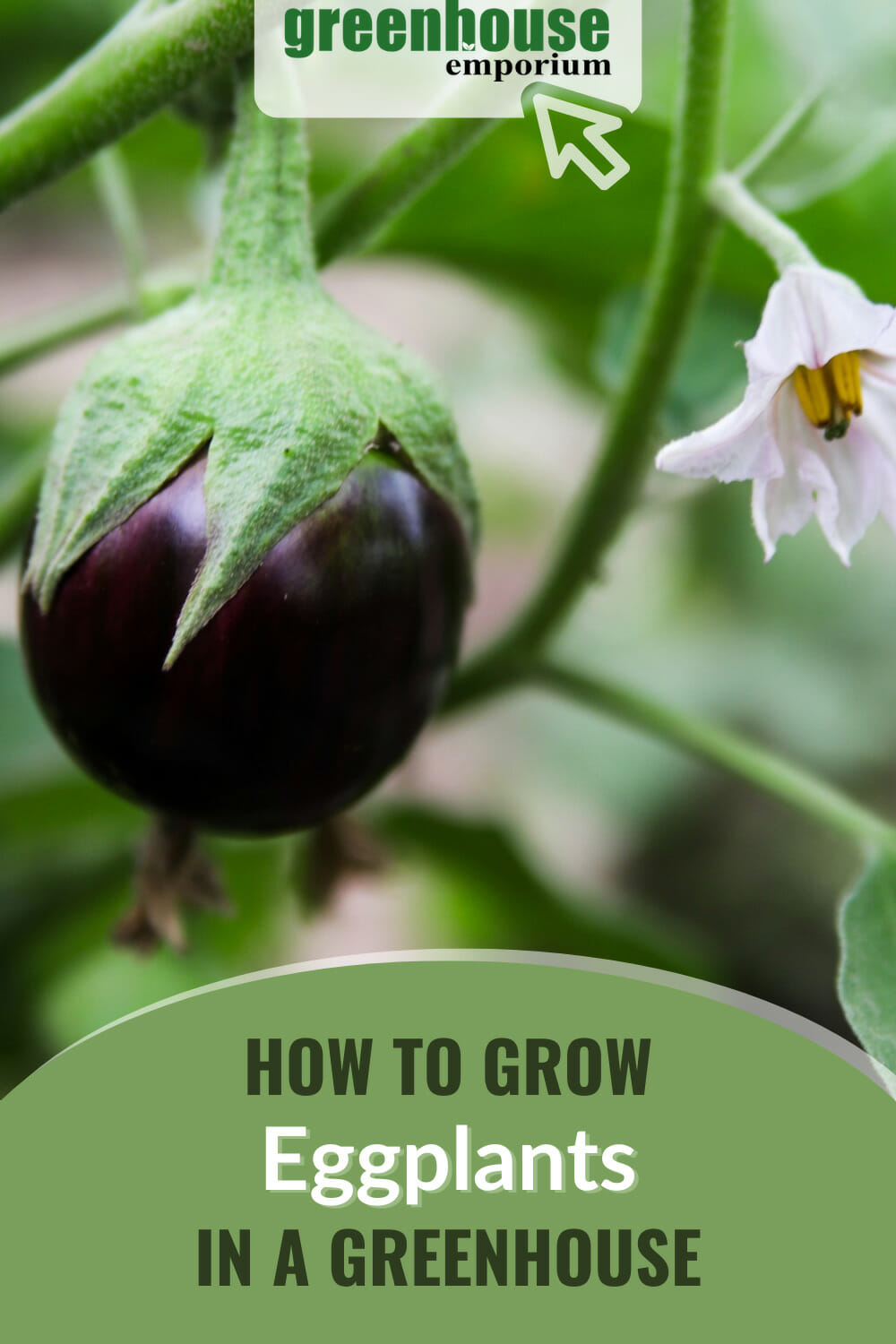
How to care for eggplants grown in a greenhouse
Now that you’re ready to start growing your own eggplants, whether from seeds or nursery starts, let’s take a look at what it takes to keep these plants healthy. After all, you want to end up with plenty of large, delicious purple fruits, right?
Light requirements
Like its close relative the tomato, eggplant requires full sun. At least 6-8 hours of direct sunlight daily will help ensure that your eggplants thrive. Make sure to plant your eggplants accordingly.
If your greenhouse is shaded by nearby trees, or you just don’t have enough sunlight in the day, you can consider supplementing with grow lights such as these.
Temperature
It makes sense that sun-seeking eggplants would like a warm climate. Although no one temperature is perfect, there is often a sweet spot where greenhouse-grown fruits and veggies flourish. For eggplants, this temperature is between 80-90 degrees.
Remember that your greenhouse should stay above 65 degrees at night. Any colder, and the eggplant fruit will fail to develop properly.
Warmth is especially important when starting eggplant seeds. To keep the soil in your seedling flats warm, use a heat mat.
Pollination
Bees and other pollinators are critical to ensuring that many of our crops fully develop and result in fruit or seeds. Although keeping out pests is one of the benefits of having a greenhouse, this also means that bees and pollinators don’t have access to your greenhouse crops unless you open doors and windows (and thereby opening the greenhouse up to pests also).

Luckily, eggplants are one of the most reliable self-pollinating plants. This means that they can pollinate themselves, using the same flower. This isn’t to say that pollinators aren’t helpful for self-pollinating plants, however. You might consider opening up your greenhouse during flowering for this reason.
Alternatively, you can put a fan inside of your greenhouse and let it lightly blow over your crops. This can stimulate pollination within your greenhouse!
Common eggplant pests and diseases
Fortunately, growing eggplants in a greenhouse means less chances of pests interrupting the growing process. Rodents and deer will have a tough time getting inside your greenhouse, but you should still look out for some common pests and diseases.
Blight, the bane of a gardener’s existence, can take hold of your eggplants if you’re not careful. To take matters into your own hands with this fungus, you’ll want to get rid of infected crops and make sure that the air inside your greenhouse is well-ventilated (this is where a fan can come in handy).

Unfortunately, bugs can also sneak into your greenhouse. Keep an eye out for flea beetles, Colorado potato beetles, tomato hornworms, and whiteflies. Being proactive with your gardening, like getting rid of plant residue and planting native plants, can help keep these insects at bay.
When to harvest eggplants
We get it: you’ve spent months growing a plant and now you’re wondering when you can finally harvest your eggplants. Luckily, eggplants are most delicious when harvested young. If you gently press on an eggplant with your finger and the skin isn’t too firm, and your eggplant’s color is uniform, it’s time to pick it!
To harvest eggplants, cut close to the stem to avoid damaging the fruit or plant. Now you can enjoy your home-grown eggplant any way you like!

